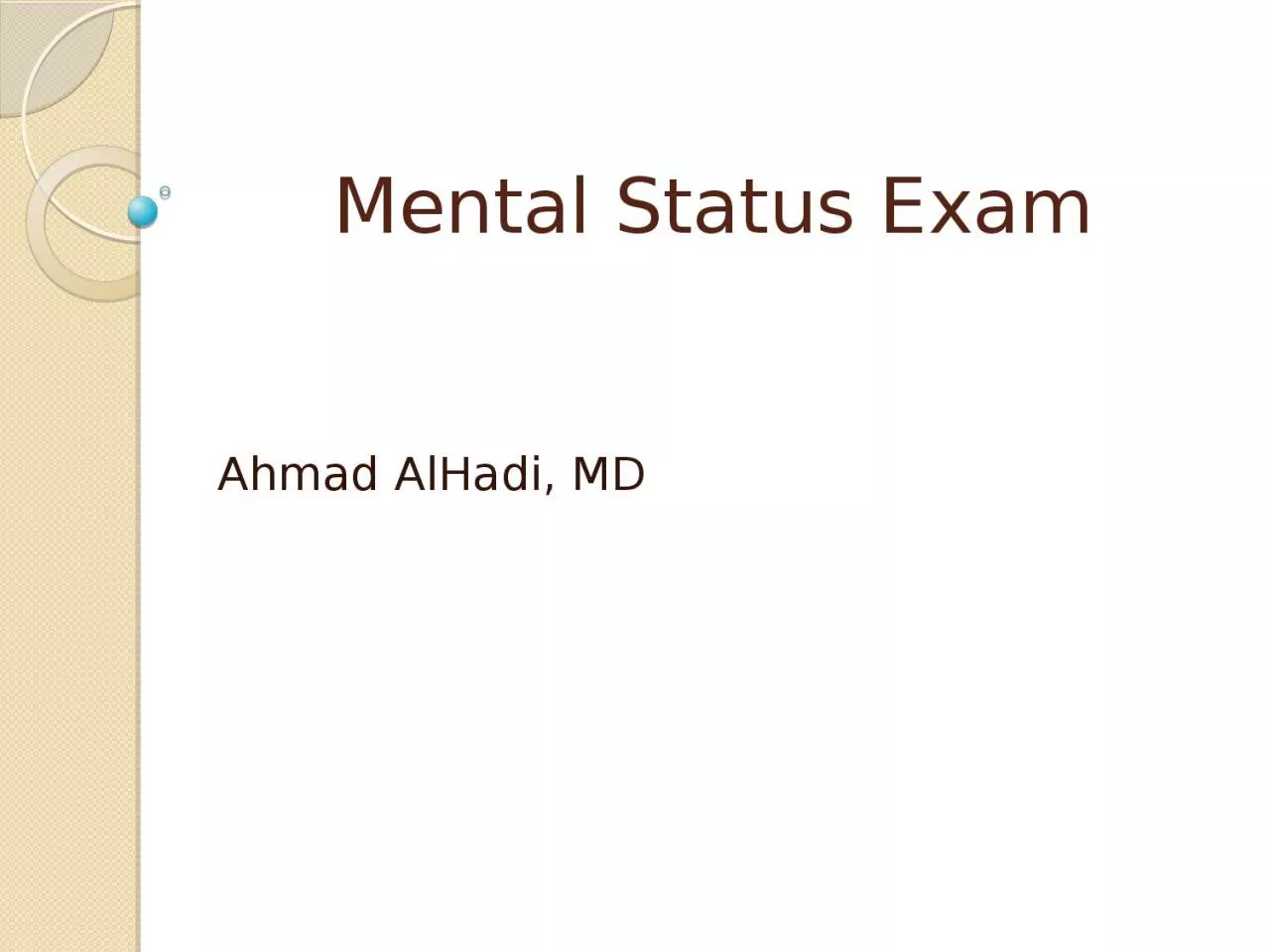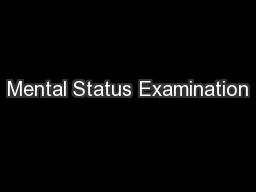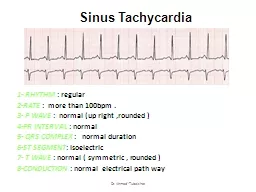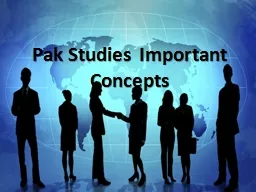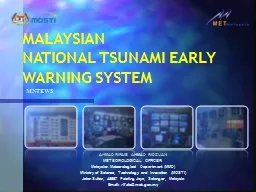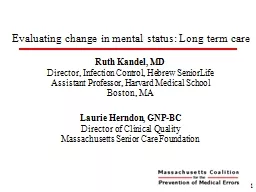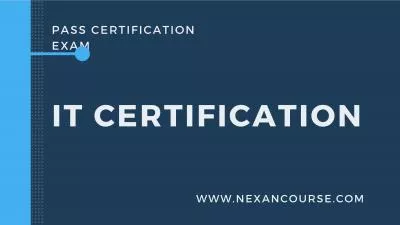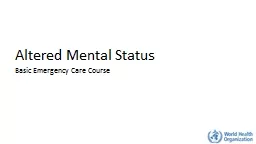PPT-Mental Status Exam Ahmad AlHadi,
Author : candy | Published Date : 2024-03-13
MD What it is it The Mental Status Exam MSE equivalent to describes the mental state and behaviors of the person being seen both objective and subjective Why
Presentation Embed Code
Download Presentation
Download Presentation The PPT/PDF document "Mental Status Exam Ahmad AlHadi," is the property of its rightful owner. Permission is granted to download and print the materials on this website for personal, non-commercial use only, and to display it on your personal computer provided you do not modify the materials and that you retain all copyright notices contained in the materials. By downloading content from our website, you accept the terms of this agreement.
Mental Status Exam Ahmad AlHadi,: Transcript
Download Rules Of Document
"Mental Status Exam Ahmad AlHadi,"The content belongs to its owner. You may download and print it for personal use, without modification, and keep all copyright notices. By downloading, you agree to these terms.
Related Documents

